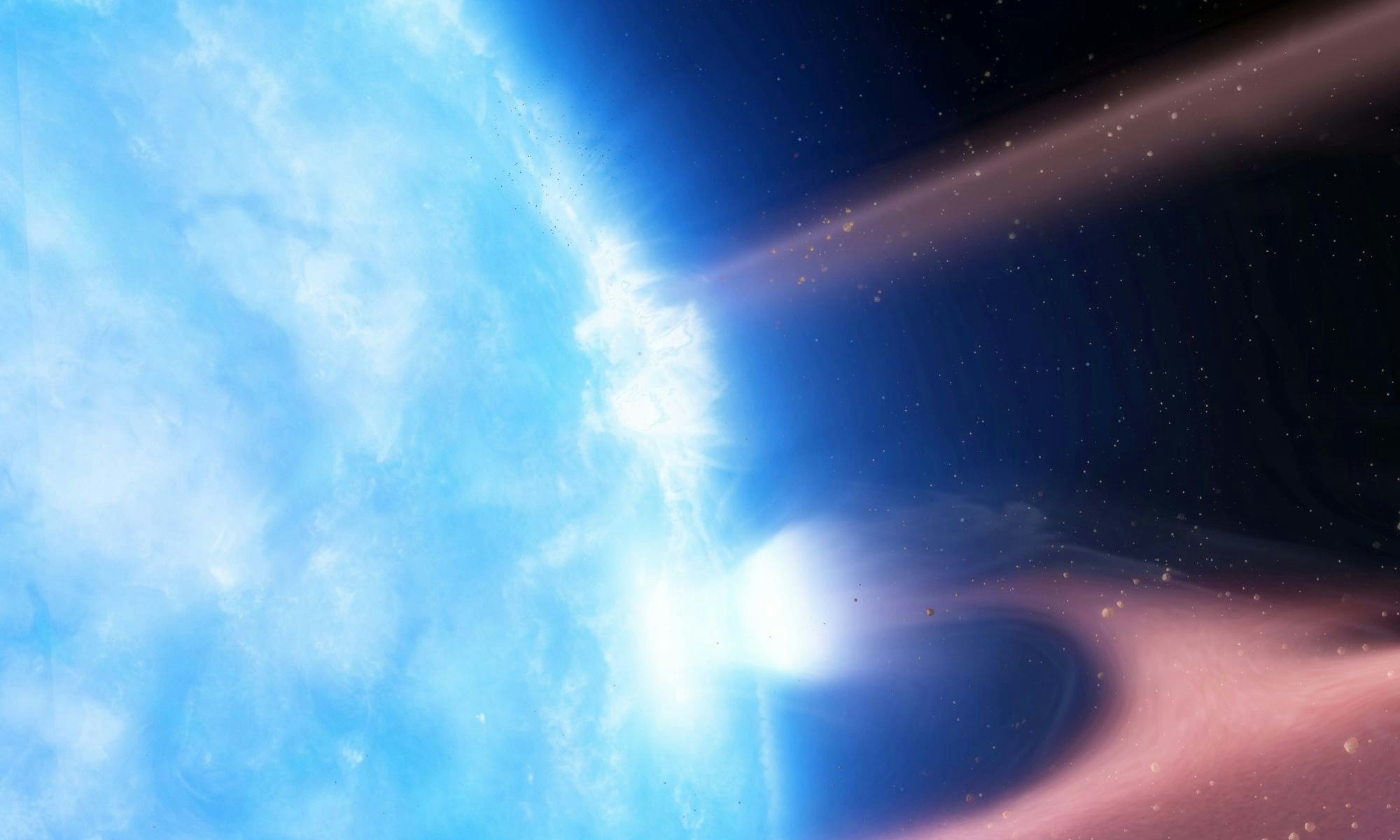
When our Sun dies, the Earth will die with it. As a star of middling mass, the Sun will end its life by swelling into a red giant star. After a last cosmic moment of brilliance, the remnant core of the Sun will collapse into a white dwarf. This won’t occur for billions of years, but the mass and composition of the Sun means a white dwarf is its inevitable fate.
But the details of Earth’s demise are less clear. During the red giant stage, the Sun might swell beyond the orbit of our world. This could cause Earth to be cast off into interstellar space, or to be consumed in fire. But it might be thrown into an unstable orbit, causing Earth or its fragments to collide with the white dwarf in time.
Observations of white dwarfs have suggested this third scenario. Although most of the outer layers of a star are cast off during the red giant stage, white dwarfs typically have a thin atmosphere of gas remaining. One would expect this atmosphere to be elements such as carbon or oxygen, which are formed in the upper layers of a star’s core towards the end.
But between a quarter to half of the white dwarfs have heavier elements such as iron and calcium in their atmospheres. These heavier elements weren’t part of the cast-off outer layers of the star, so they likely came from planetary debris captured by the white dwarf after it formed.
At least that was the idea, but collisions between planetary remnants and white dwarfs hadn’t been observed, so it was hard to be sure of the source. But a new study published in Nature finds evidence of these collisions.
Using the Chandra X-ray Observatory, the team looked at a white dwarf star known as G29-38. Since Chandra has a high resolution, it can distinguish x-rays emitted from G29-38 versus those from other nearby sources. They observed x-ray flashes from the white dwarf consistent with planetary debris collisions. When sizable debris strikes the atmosphere of the white dwarf, the material can be heated to a million Kelvin, causing it to emit x-rays. The rate at which x-ray flashes were observed matches the rate needed to account for heavier elements in the white dwarf atmosphere.
Given the high percentage of white dwarfs with heavy metals in their atmosphere, there’s a good chance some of the Sun’s planets will end in a collision with the Sun. If that’s true, our world could end not with a whimper, but with a bang.
This article was originally published on Universe Today by Brian Koberlein. Read the original article here.







